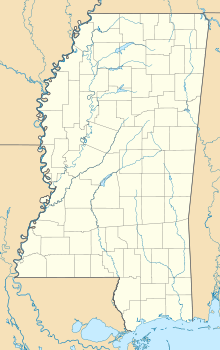| Siege of Vicksburg | |||||||
|---|---|---|---|---|---|---|---|
| Part of the Vicksburg campaign of the Western Theater of the American Civil War | |||||||
 The Siege of Vicksburg - Assault on Fort Hill by Thure de Thulstrup | |||||||
| |||||||
| Belligerents | |||||||
|
|
| ||||||
| Commanders and leaders | |||||||
|
|
| ||||||
| Units involved | |||||||
| Army of the Tennessee | Army of Mississippi | ||||||
| Strength | |||||||
| ~77,000[2] | ~33,000 | ||||||
| Casualties and losses | |||||||
| 4,835 total |
32,697 total (3,202 killed/wounded/missing
172 cannons captured by United States29,495 surrendered)[3] | ||||||
Location within the Confederate State of Mississippi | |||||||
The siege of Vicksburg (May 18 – July 4, 1863) was the final major military action in the Vicksburg campaign of the American Civil War. In a series of maneuvers, Union Major General Ulysses S. Grant and his Army of the Tennessee crossed the Mississippi River and drove the Confederate Army of Mississippi, led by Lieutenant General John C. Pemberton, into the defensive lines surrounding the fortress city of Vicksburg, Mississippi, leading to the successful siege and Confederate surrender.
Vicksburg was the last major Confederate stronghold on the Mississippi River; therefore, capturing it completed the second part of the Northern strategy, the Anaconda Plan. When two major assaults against the Confederate fortifications, on May 19 and 22, were repulsed with heavy casualties, Grant decided to besiege the city beginning on May 25. After holding out for more than 40 days, with their supplies nearly gone, the garrison surrendered on July 4. The Vicksburg campaign's successful ending significantly degraded the Confederacy's ability to maintain its war effort. This action, combined with a siege that led to the surrender of the downriver Port Hudson to Major General Nathaniel P. Banks on July 9, yielded command of the Mississippi River to the Union forces, which held it for the rest of the conflict.
The Confederate surrender on July 4, 1863 is sometimes considered, combined with General Robert E. Lee's defeat at Gettysburg by Major General George Meade the previous day, the war's turning point. It cut off the Trans-Mississippi Department (containing the states of Arkansas, Texas and part of Louisiana) from the rest of the Confederate States, effectively splitting the Confederacy in two for the rest of the war. Lincoln called Vicksburg "the key to the war".[4]

